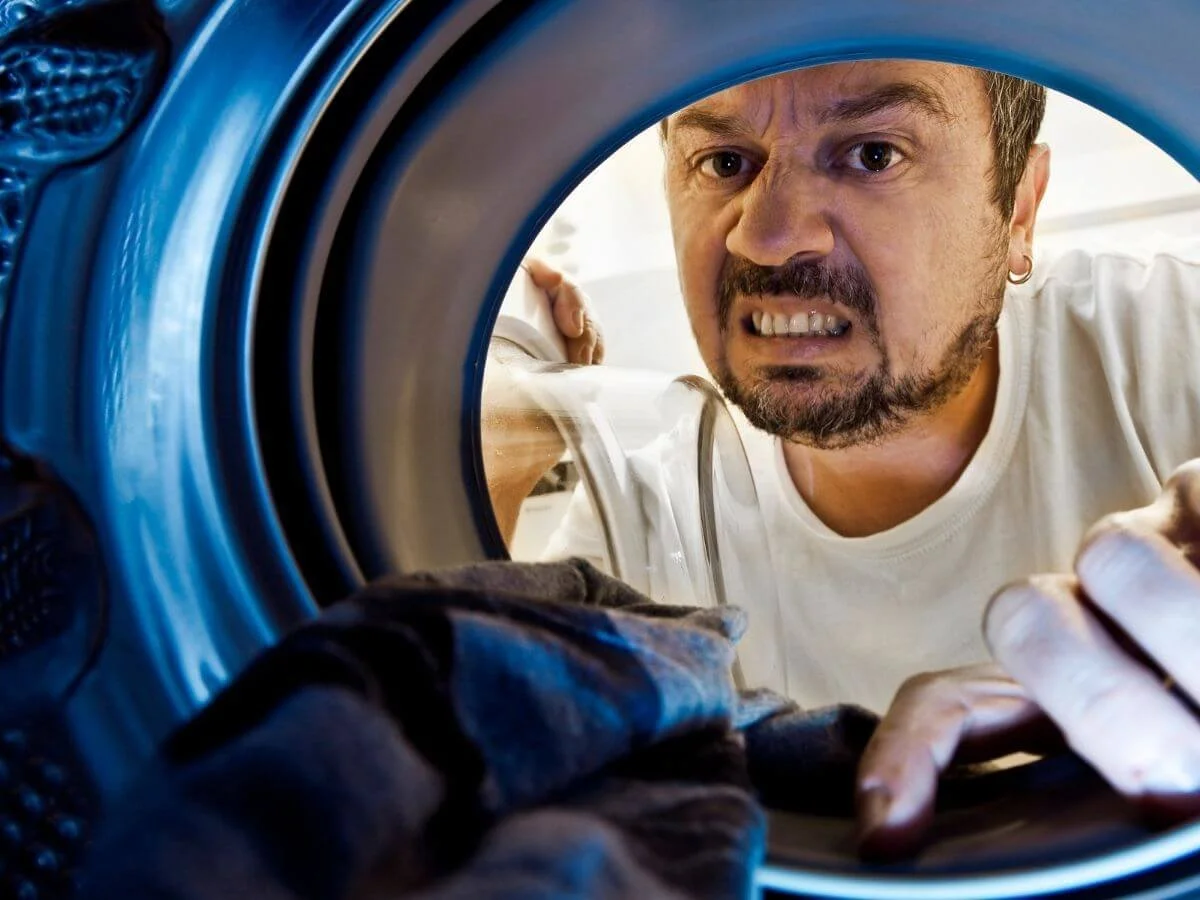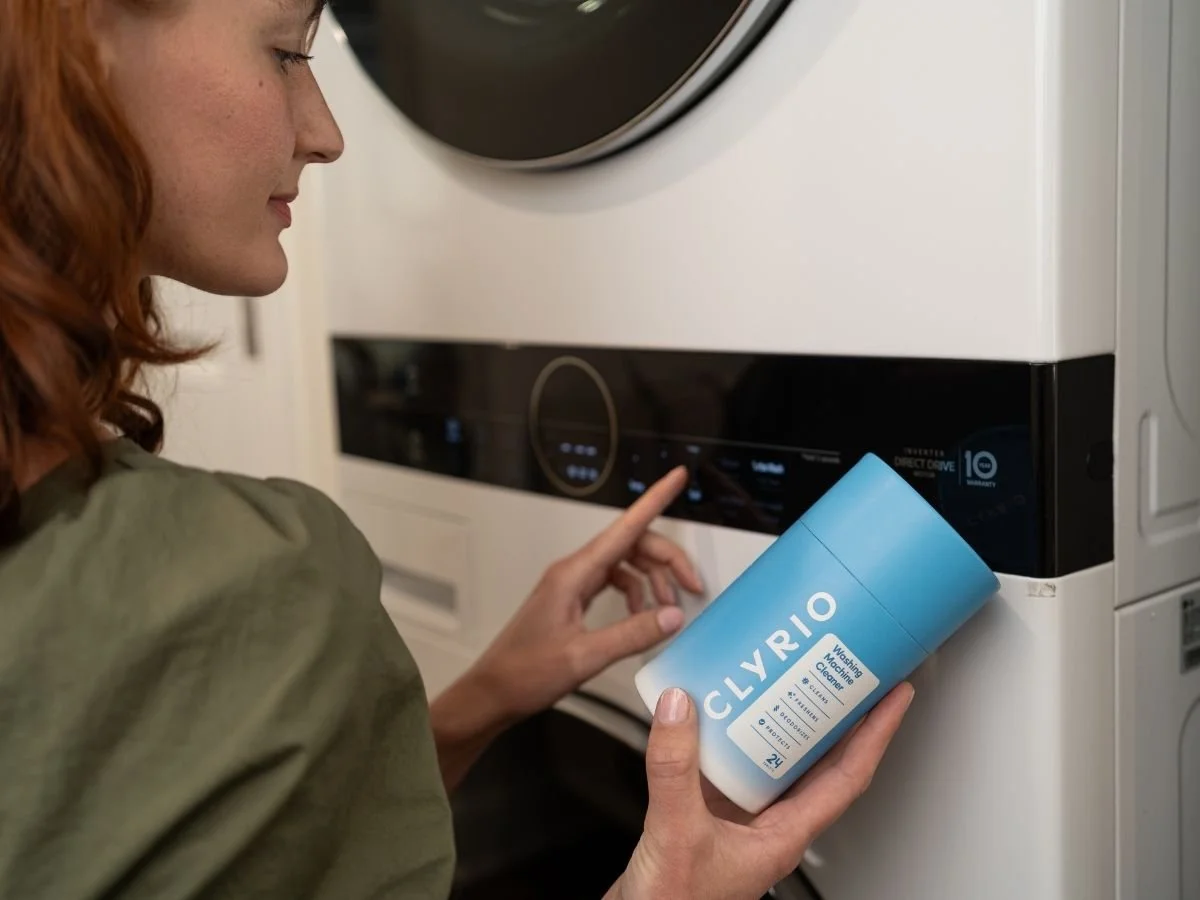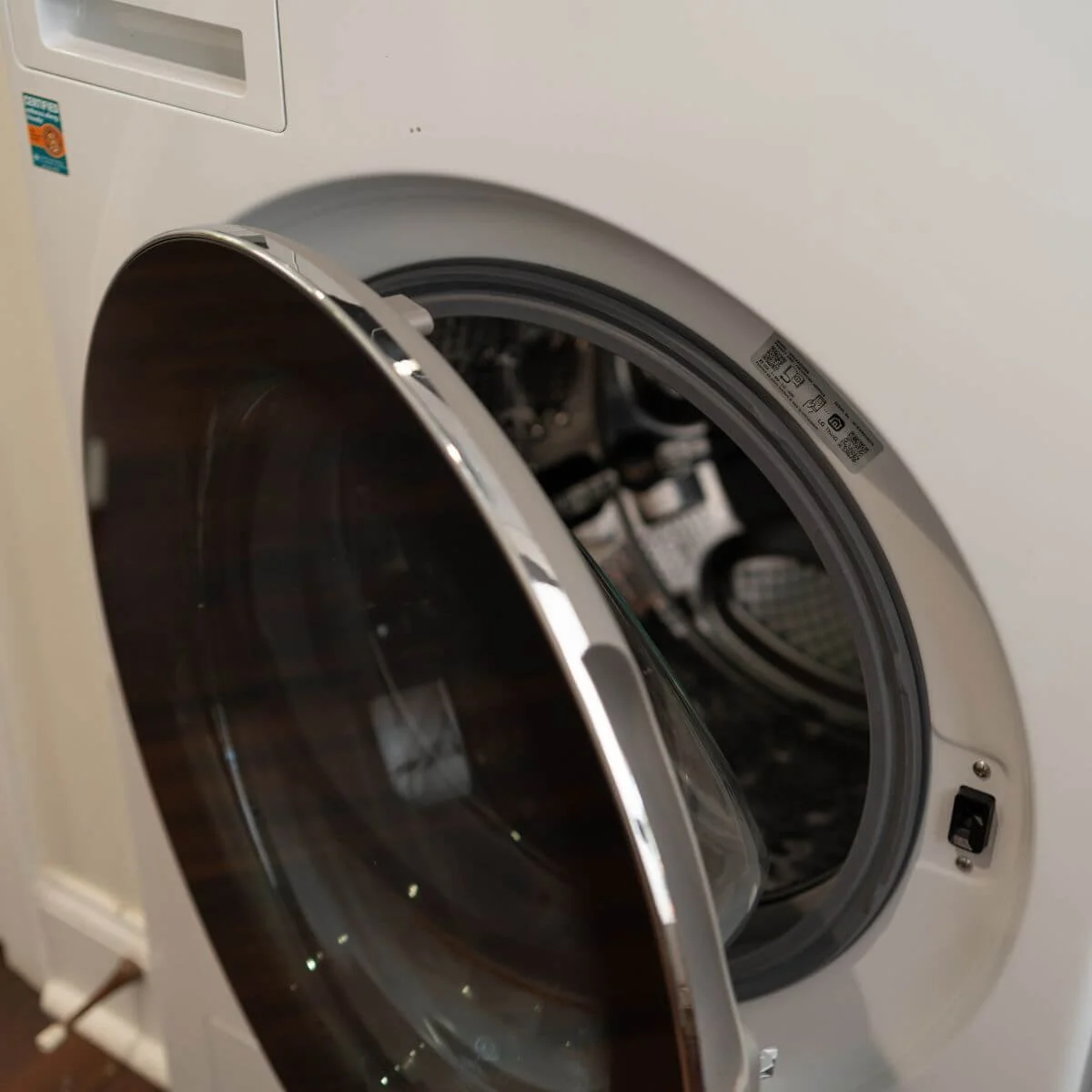Washing Machine Odor Remover: How to Clean a Smelly Washer Fast
A smelly washing machine can turn clean laundry into a bad smell problem. This guide shows you how to clean a smelly washer step-by-step, why washing machine smells happen, and the safest ways to eliminate odor fast—so your washer gets back to smelling fresh and your routine stays simple.
Washing machine: why does it start to smell?
Modern machines use less water, which saves energy but allows detergent residue to remain in the drum and dispenser. When residue meets warmth and stagnant water, it can become a breeding ground and a perfect environment for mold and mildew growth. Over time, scum and minerals build up inside parts you rarely see.
Tip: it’s best to leave the door open after loads and run periodic maintenance cycles to eliminate odors before they start.
Smelly: what exactly are you smelling?
That “gym-bag” scent is often mildew around the gasket and rubber seal around the door, plus leftover fabric softener in the detergent dispenser. If the smell persists, you likely have hidden residue in hoses or the drain filter. We’ll cover steps to clean each area below.
Washer: which habits cause odor?
Using too much detergent (especially in high-efficiency models) leaves film that traps moisture. Not airing out the tub by leaving the washer door ajar after cycles also adds to odor. Finally, skipping a monthly hot cycle or cleaning washing machines routine lets grime accumulate.
Smelly washing machine: quick diagnosis checklist
Open the washer door and sniff the drum.
Pull back the gasket to check for residue or mould.
Remove the dispenser tray; look for slime or scum.
Inspect the drain filter for lint or coins that become a breeding ground for bacteria.
Odor: what removes it fastest?
For speed and consistency, use a washing machine cleaner. Washer cleaner tablets are simple: drop one directly into the drum, run an empty hot water cycle, and let chemistry work. Prefer a natural routine? Try water and vinegar or hot water and vinegar with a cup of baking soda to neutralize smells. (We’ll give exact amounts below.)
Clyrio® washing machine cleaner tablets. Drop. Run. Done.
Clean a smelly washer fast: the one-minute plan
When you need a same-day fix to clean a smelly washer, wipe the rubber seal, toss in a Clyrio® tablet, and run a hot program. That alone often eliminate[s] the smell before tonight’s washing clothes.
Smelly washer: what causes it most often?
A smelly washer usually comes down to three culprits: leftover detergent, a damp gasket, or a clogged drain filter. Each one creates an environment for bacteria. Address all three and you’ll restore a machine smelling fresh and clean.
Clean a smelly washing machine (full routine)
Detergent dispenser and run: Pull the tray, soak in warm water with a little white vinegar, scrub, and dry.
Drum & gasket: Wipe with a microfiber cloth; for spots, use diluted bleach (never with vinegar).
Hot wash cycle: Place a Clyrio® tablet in the drum and select the hottest program; if needed, add 1 cup of cups of white vinegar to the tray (never with bleach).
Rinse: If you used bleach, finish with a short rinse to remove any remaining product.
Clean your washing machine (maintenance you’ll actually do)
To clean your machine monthly, use washing machine cleaner tablets and a hot wash cycle—fast and repeatable. Between deep cleans, keep surfaces dry and measure detergent carefully to avoid much detergent buildup.
Keep your washer running in top shape
“Set and forget” wins. A monthly tablet keeps the interior in top shape while weekly wipe-downs prevent mold growth. If you ever notice residue, a quick cycle with a cup of baking soda directly in the drum helps.
Washing machine smells: when chemistry beats DIY
DIY works for light film, but heavy washing machine smells respond best to a formulated cleaner. If you prefer DIY, stick to vinegar one day and bleach another—never together.
Clean a smelly washer (targeted method)
Sprinkle a cup of baking soda in the tub.
Pour cups of white vinegar into the tray.
Run a hot program; finish with a quick rinse.
Leave the washer door open afterward to dry the cavity.
Drain: don’t let hidden gunk return the odor
Open the service panel, remove the drain filter, and clear lint or coins. A blocked filter can cause stagnant water and a bad smell. Re-seat the filter firmly and check the water supply hoses for kinks.
Clean your washer (weekly 3-minute refresh)
Wipe the glass and clean around the boot.
Dry the gasket and rubber seal.
Shake out the tray and dispenser.
Using your washing machine, finish with a quick warm wash cycle to remove any remaining residue.
Front loaders: small differences that matter
Front loaders seal tightly to prevent leaks, which is great—but that tight seal traps moisture. Vent by leave the washer door open between uses. Top-load owners can prop the lid; both types should measure detergent carefully and run an occasional hot cycle.
Smelling fresh: simple habits that work
The fastest way to stay smelling fresh is also the easiest: dose detergent correctly, dry what you can reach, and let air move. If you use too much detergent, scale back; excess suds can lead to buildup.
Smelly washer and keep clean: how to restore and maintain
When dealing with a smelly washer, do one restoring deep clean, then a quick weekly habit to keep results. Tablets simplify this—no mixing, no measuring.
Buy on Amazon — Clyrio® tablets for monthly maintenance.
Washer smells: what if odor returns?
If washer smells come back quickly, re-check the drain, measure detergent or fabric softener precisely, and confirm you didn’t miss the rubber seal. Persistent odor can point to hidden residue in hoses, especially if you use cold cycles only.
Your washer and keeping it fresh (your 30-day plan)
Week 1: deep clean with a Clyrio® tablet and a cup of bleach (place bleach in the bleach dispenser, never mix with vinegar).
Weeks 2–4: quick wipe-downs, then a 15-minute warm refresh. Always door open after loads to keep it fresh.
Steps to clean
Empty the tub and prop the door.
Remove the tray; soak and scrub.
Wipe the boot and rubber seal; treat spots with diluted bleach.
Clyrio® Tablet directly into the drum; select a hot water cycle or hot wash cycle.
Air dry with door open; leaving the washer door ajar prevents a breeding ground from forming.
Keep it fresh (rules of thumb)
Measure detergent; too much creates film.
Vent the cavity; leave the door open after loads.
Run a monthly Clyrio® tablet on a hot cycle.
If odor returns, inspect the drain and tray first.
FAQ: dealing with a smelly washer, fast
-
Use a washing machine cleaner monthly. On other weeks, run a warm refresh with water and vinegar (or a tablet). Never combine bleach and vinegar.
-
Yes—add a measured amount of white vinegar and a cup of baking soda for light film. For heavy grime, using a commercial cleaner tablet like Clyrio® is more reliable.
-
Yes. Their design traps moisture, so always prop the door and wipe the gasket. That habit alone can eliminate the smell long-term.
-
Use the designated tray only—bleach in the bleach dispenser—and run a rinse after to remove any remaining product.
-
Follow the monthly tablet plan, measure detergent, and air-dry the tub. Those three moves keep your washer in great shape.
Summary: the fast path to a fresh machine
Use a tablet odor remover monthly to eliminate odors and keep the washing machine clean.
Wipe the gasket, tray, and drum; prop the washer door to dry.
Measure detergent; excess causes residue.
Clear the drain filter to avoid stagnant water and bad smell issues.
For DIY days, pick vinegar or bleach (not both), with a cup of baking soda as needed.
Keep the routine simple so your machine stays smelling fresh.
Prefer the one-step method? Buy on Amazon and use Clyrio® washing machine cleaner tablets—Drop. Run. Done.









